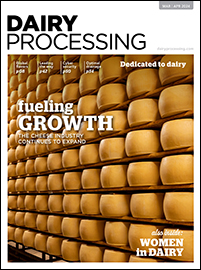CHICAGO — The growing number of US consumers using GLP-1 drugs for weight loss are impacting specific sectors of the consumer packaged goods (CPG) industry in a quantifiable way, according to a new report from the market researcher Circana.
The most negatively impacted sectors are frozen, refrigerated, general food and beverages. Circana found GLP-1 users’ monthly spending on frozen foods fell three points from their pre-usage baseline during the first year on the drug.
Conversely, produce and deli are seeing boosts in spending as GLP-1 users look for more vegetables, fruits and protein and fewer sugary and processed products, per the report, Early Days of a Revolution: How GLP-1s are Already Changing Consumer Spending.
GLP-1, or glucagon-like peptide-1 drugs, can help people lose weight by reducing their appetite and slowing digestion. The most prescribed GLP-1 drugs include Ozempic, Wegovy, Mounjaro, CagriSema and Rybelsus.
Salty snacks are seeing a slight decline but weren’t on the list of top products experiencing spending reductions from GLP-1 users, said Sally Lyons Wyatt, Circana’s global executive vice president and chief adviser, Consumer Goods & Foodservice Insights.
However, another recent study found GLP-1 users reduced grocery spending on sweet and salty foods and snacks, and their overall average monthly spend fell by nearly 6%.
Circana’s report said other CPG products seeing increases in retail spending by GLP-1 users include gum, non-fruit drinks and beans. Some of the changes in retail spend gradually even out as GLP-1 users moderate their purchases back toward benchmark levels by the end of year one, the report added.
During a Jan. 8 webinar to present the ripple effects from the latest data, Lyons Wyatt called the impact of GLP-1 drugs “the beginning of a revolution” that will not just impact CPG but sectors around the world.
“We think there’s a great opportunity to extend brands where it makes sense,” she said, giving an example of her son going to buy a jacket from Patagonia and returning with Patagonia branded crackers as well.
CPG companies and others are rapidly introducing GLP-1-friendly products to capture this increasing audience, Lyons Wyatt noted. Nestle’s Vital Pursuit brand, the On Track badge on certain Healthy Choice items from Conagra Brands and Protality products from Abbott are just the latest examples, which she said “are growing by the day.”
“What Conagra and Nestle have done are great first steps and 100% what they need to do,” Lyons Wyatt said. “Any business that goes early into something will have to educate consumers.”
Circana also recently analyzed the demographics of more than 6,000 households with someone currently using GLP-1 drugs, said DJ Joyner, a Circana consultant who participated in the webinar. Many of the households are millennial-led and have both higher and lower incomes, he said, and those taking the drugs for weight loss expected to take them for a shorter period than those taking them for diabetes.
“Any company adjusting product and marketing strategies in response to these drugs should take this into consideration,” Joyner said.
Circana’s report suggested additional considerations for companies impacted by GLP-1 use. These include focusing on high-protein categories, ready-to-eat meals and portion-controlled snacks, which “are well-positioned to meet the specific needs of GLP-1 users, demonstrating the potential for growth in both traditional and emerging product segments.”
Other innovative opportunities may lie in cross-sector collaborations with the wellness, beauty and pharmaceutical industries, the Circana report said, since some GLP-1 users increase their purchase of products to make them look better as they lose weight and begin to feel better.
Users of the drugs for weight loss also alter their dining habits, Circana found. They spend less at quick-service restaurants and on prepared foods at convenience stores and shift more toward grocery foodservice, fast-casual dining and midscale restaurants during year one on the medications.
Joyner called this “another opportunity for retailers trying to mitigate some of the threats to other categories on the shelf. They might do more marketing around RTE products targeted to weight-loss shoppers.”
The report noted consumers’ evolving behaviors reveal “a clear connection between category growth and the health-driven preferences of these consumers, offering brands fresh opportunities to align with their goals.”
The market opportunity for GLP-1 drugs is projected to grow from an estimated $133 billion now to $150 billion by 2030. The increasing rates of obesity and diabetes in the United States are driving this growth, with Centers for Disease Control and Prevention data indicating more than 100 million US adults are obese.
Citing National Institutes of Health data, Lyons Wyatt said the prevalence of diabetes in the United States is expected to jump by 54% between 2015 and 2030. The trends present challenges and opportunities to CPG companies and other industry sectors to step up and take advantage of possible opportunities.
“Companies need to have a strategy,” she said. “They need to consider brands outside their current industry, understand usage occasions, address packaging and messaging to align with GLP-1 weight-loss users, leverage purchase-based targeting and consider collaborating with medical professionals to reach consumers in a more holistic way.”

